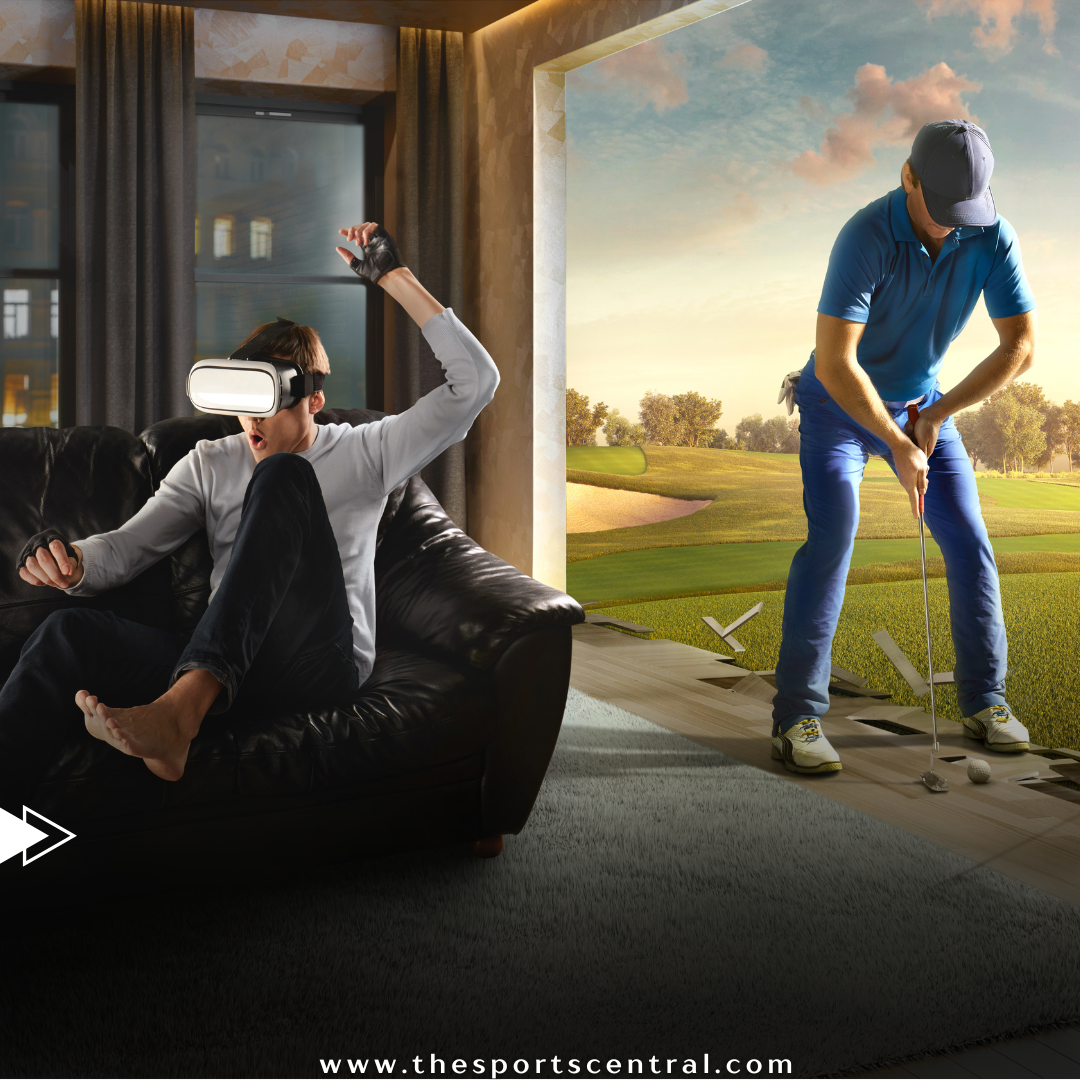Virtual Reality (VR) has made significant strides across various sectors, and sports training is no exception. As technology continues to evolve, VR is becoming an increasingly vital tool for athletes looking to gain a competitive edge. This detailed article explores how athletes are using VR in their training routines, the benefits and challenges of VR integration, and the future prospects of VR in sports.
The Rise of Virtual Reality in Sports Training
The Concept of VR in Sports
Virtual Reality in sports training involves the use of immersive, computer-generated environments that simulate real-life scenarios. Athletes use VR headsets and other sensory devices to engage with these environments, allowing them to practice skills, analyze their performance, and prepare mentally for competitions without the physical constraints of the real world.
Early Adoption and Development
The concept of using VR in sports dates back to the early 2000s when technology companies began exploring its potential. Early applications were limited by the technology of the time, but rapid advancements in VR hardware and software have since opened up new possibilities. Companies like STRIVR, Beyond Sports, and Oculus have been at the forefront of developing VR solutions tailored specifically for athletes.
Applications of VR in Athletic Training
Skill Development and Simulation
One of the primary applications of VR in sports is skill development through simulation. VR allows athletes to practice their skills in a controlled environment that mimics real-world conditions. For instance:
Football: Quarterbacks can use VR to practice their throws, decision-making, and reading defenses. VR simulations can recreate different game situations, helping players improve their reactions and strategies.
Golf: Golfers can practice their swings and putting techniques in virtual simulations of famous courses. This helps them refine their skills and prepare for actual tournaments.
Injury Prevention and Rehabilitation
VR is also used in injury prevention and rehabilitation. By simulating different training scenarios, athletes can practice movements and techniques that reduce the risk of injury. For rehabilitation:
Physical Therapy: Injured athletes can use VR to perform exercises that aid in recovery. VR can provide a safe and controlled environment where therapists can monitor progress and adjust exercises accordingly.
Mental Conditioning: VR can help athletes overcome the psychological barriers associated with returning to play after an injury. By immersing them in game-like scenarios, VR helps rebuild confidence and mental resilience.
Performance Analysis
Performance analysis is another critical application of VR in sports. VR systems can track and analyze an athlete’s movements, providing detailed feedback on their performance. This data can be used to:
Improve Techniques: Athletes can receive real-time feedback on their form and technique, allowing for immediate adjustments.
Analyze Opponents: Teams can use VR to study their opponents’ tactics and strategies. By simulating games and analyzing the opponent’s play style, athletes can better prepare for actual competitions.
Mental Training and Visualization
Mental training and visualization are crucial components of an athlete’s preparation. VR offers an immersive way to enhance these aspects:
Visualization: Athletes can use VR to visualize success, mentally rehearsing their performance in a realistic setting. This helps improve focus, reduce anxiety, and boost confidence.
Stress Management: VR can simulate high-pressure situations, allowing athletes to practice stress management techniques and improve their composure during actual competitions.
Case Studies: Athletes and Teams Using VR
The NFL and STRIVR
The National Football League (NFL) has been one of the early adopters of VR technology. Several NFL teams have partnered with STRIVR, a VR training company, to enhance their training programs. For instance, the Dallas Cowboys and the San Francisco 49ers have used VR to train their quarterbacks, improving their ability to read defenses and make quick decisions.
The NBA and Beyond Sports
In basketball, the NBA has utilized VR for player development and fan engagement. Beyond Sports, a company specializing in VR sports training, has worked with NBA teams to create virtual simulations of game scenarios. Players use these simulations to practice shooting, passing, and defensive strategies.
Professional Golfers and Oculus
Professional golfers like Jordan Spieth and Rory McIlroy have incorporated VR into their training routines. Using VR systems like Oculus, they can practice their swings and putting techniques in virtual recreations of famous golf courses. This helps them prepare for tournaments and refine their skills in a realistic yet controlled environment.
Olympic Athletes and VR Training
Olympic athletes from various sports have also embraced VR technology. For instance, the U.S. Ski and Snowboard team has used VR to simulate downhill skiing courses, helping athletes familiarize themselves with the course layout and improve their performance.
Benefits of VR in Sports Training
Enhanced Skill Development
VR allows athletes to practice their skills in a variety of scenarios without the physical limitations of the real world. This enables more focused and repetitive practice, leading to improved technique and performance.
Injury Prevention and Recovery
By providing a safe and controlled environment, VR helps reduce the risk of injury during training. For injured athletes, VR offers a valuable tool for rehabilitation, allowing them to perform exercises that aid recovery while minimizing the risk of re-injury.
Detailed Performance Analysis
VR systems can track and analyze an athlete’s movements in great detail, providing valuable insights into their performance. This data can be used to make precise adjustments to techniques, leading to better performance.
Improved Mental Preparation
VR’s immersive nature makes it an excellent tool for mental training and visualization. Athletes can use VR to practice stress management techniques, visualize success, and mentally prepare for high-pressure situations.
Cost-Effective and Time-Efficient
VR training can be more cost-effective and time-efficient than traditional training methods. It eliminates the need for travel to training facilities and reduces the wear and tear on an athlete’s body by providing a low-impact training alternative.
Challenges and Limitations of VR in Sports Training
High Initial Costs
The initial cost of VR hardware and software can be high, making it a significant investment for sports teams and individual athletes. However, as technology advances and becomes more widespread, costs are expected to decrease.
Technological Limitations
While VR technology has come a long way, it still has some limitations. The realism of simulations can vary, and there can be a lag between an athlete’s movements and the virtual environment’s response. These issues can affect the effectiveness of VR training.
Adaptation and Acceptance
Adapting to VR training can be challenging for some athletes, especially those who are not familiar with advanced technology. There can also be resistance from coaches and trainers who are accustomed to traditional training methods.
Health Concerns
Prolonged use of VR can cause discomfort, including eye strain, headaches, and motion sickness. It’s essential to use VR in moderation and follow guidelines to minimize these risks.
The Future of VR in Sports Training
Advancements in Technology
As VR technology continues to advance, we can expect more realistic and immersive simulations. Improvements in graphics, motion tracking, and haptic feedback will enhance the training experience, making it even more effective for athletes.
Integration with Other Technologies
The integration of VR with other technologies, such as artificial intelligence (AI) and big data analytics, will open up new possibilities for sports training. AI can analyze performance data to provide personalized feedback and recommendations, while big data can identify trends and patterns that inform training strategies.
Wider Adoption Across Sports
As the benefits of VR become more apparent, we can expect wider adoption across various sports. From football and basketball to swimming and gymnastics, VR has the potential to revolutionize training methods and enhance athletic performance.
VR in Grassroots and Youth Sports
VR technology will likely become more accessible to grassroots and youth sports programs. This will allow young athletes to benefit from advanced training techniques early in their development, potentially leading to higher levels of performance in the future.
Enhanced Fan Engagement
Beyond training, VR has the potential to transform fan engagement. Virtual reality experiences can bring fans closer to the action, offering immersive perspectives of live games and behind-the-scenes content. This can create new revenue streams for sports organizations and enhance the overall fan experience.
Virtual Reality is revolutionizing the way athletes train, offering a wide range of benefits from enhanced skill development and performance analysis to injury prevention and mental preparation. While there are challenges and limitations to overcome, the potential of VR in sports training is immense. As technology continues to evolve, VR will become an even more integral part of an athlete’s training regimen, helping them achieve new levels of performance and success.
The integration of VR in sports training is still in its early stages, but its impact is already significant. As more athletes and teams adopt this technology, we can expect to see continued innovation and advancements, shaping the future of sports training and performance. With VR, the possibilities are virtually limitless, and the future of sports training looks brighter and more exciting than ever











One thought on “Virtual Reality in Training: How Athletes Are Using VR”